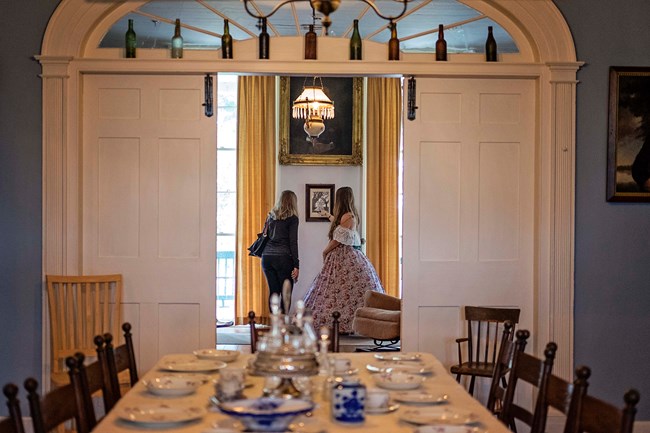We camped at
three locations in California to chase stamps.
On June 16, Bakersfield was our first stop. The Cesar Chavez Memorial Monument was our
first stamp chasing effort. The monument is located on the property known as La
Paz; it is the symbol and focal point of the farm worker movement and served as
the national headquarters of the United Farm Workers of America. It is where Cesar Chavez lived and worked and
is the place where he and others met to strategize. Thousands
of farm workers joined him to work for social justice. The area around Bakersfield as well as other small towns going north in the western section of California is heavily farm land with groves and front yards full of orange trees. Thus, the need for migrant farm workers.
The next
day, we left Bakersfield for Three Rivers, a small town near the Sequoia
National Park. John Muir, a conservationist,
named this park after the earth’s largest living tree, the sequoia. In all the world, sequoias grow naturally
only on the west slope of the Sierra Nevada, usually between 5,000 and 7,000
feet of elevation. John Muir stated that
while some trees in the Sierra Nevada die of disease or fungi, nothing hurts
the sequoia tree. Baring accidents, the
sequoia tree seems to be immortal. During
the 1880s logging companies wanted to cut down the sequoia trees. Muir’s
response to this suggestion was
(We might) “as well sell the rain clouds and the snow and the rivers to be cut up and carried away, if that were possible.”As a result of the loggers' interest in cutting the Sequoia trees, John Muir used his influence with the national government, and Sequoia National Park was created on Sept. 25, 1890.
This declaration protected all aspects of the park from poachers, loggers, and miners.

Laundry and resting were on the agenda for the next day in Three Rivers.
June 19, we
traveled to Angels’ Camp RV and Camping Resort in Angel’s Camp. We had hoped to stay at the KOA in Yosemite
National Park, but it was closed due to a recent forest fire. The route to the Angel's Campground was hilly, curvy, and unbalanced, just as I was when I completed the drive. Seems that every time I drive I end up on that type of road. But Buck complimented me on my driving! (Shock--he must have been unbalanced, too!)
John Muir made the following statement about the Yosemite National Park:
“Everybody needs BEAUTY as well as bread, places to play in and pray in, where NATURE may heal and give strength to body and SOUL alike.”
He loved the
four geographic areas—High Sierra, Granite Cliffs, Sequoia Groves, and the
Valley, which provided varied conditions for the inhabitants of Yosemite
National Park. A grand collection of waterfalls, meadows, and forests that
include groves of giant sequoias, the world’s largest living things. Yosemite
National Park is a natural wonderland and encompasses 761,170 acres. The park was established on October 11, 1890
and includes the nation’s tallest waterfall.
Another
quote by John Muir sums it all up,
“It is by far the grandest of all the special temples of Nature I was ever permitted to enter.”


















